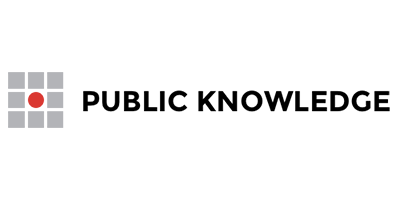Shashwat Dubey*

Disruptive AI Technologies have posed complex challenges to the existing copyrights framework under the Copyrights Act, 1957 in India. This includes the lack of regulatory mechanism to affix intermediaries’ liabilities, who have been safeguarded by the safe harbour provisions and the infringement of copyrighted works in the virtual reality spaces like metaverse. Furthermore, it is increasingly becoming difficult to distinguish between humans and AI for the ownership of copyright works as generative AI is transforming and producing creative works of art through deep machine learning processes. Additionally, the rights guaranteed under the fair use exception have been abused by individuals for commercial purposes, which further weakens the copyright protection regime in the country. Therefore, the regulatory framework needs to address these growing and significant changes developing in Copyrights space. Thus, the article argues for a dedicated Digital Copyrights Act (DCA), that shall relook at fundamental principles and protections provided under the existing copyrights framework and bring granular amendments that shall accord protection to both innovation and creators’ interests.
Introduction
In the last several months, one AI breakthrough which has made to every discussion on law and policy is ChatGPT. The increased accessibility and innovation have enabled AI to throw complex legal challenges and endanger human creativity. In a globalized market for digital content, the Indian Copyrights Act of 1957 might not be able to provide a durable legal framework. Therefore, this article aims to focus on increased scrutiny of intermediaries’ liabilities in the digital space, who have enjoyed safe harbour protection from copyright infringement till now. Additionally, the article will further delve into analysing various issues arising out of disruptive AI technologies, an umbrella term for generative AI and virtual reality. Thus, the article conclusively argue for a dedicated Digital Copyrights Act (‘DCA’) , which shall exhaustively address and resolve the issues arising in copyrights infringement in Digital spaces. Furthermore, the DCA shall seek to address the increased role of AI in content creation and content regulation in the age of Disrupting Technologies, while balancing out regulations and interests of stakeholders.
Find & Fix Intermediaries Liabilities
The IT minister in a statement stated that the safe harbour clause will be revamped in the upcoming Digital India Bill. But what raises concerns is how will this safe harbour clause change affect the copyrights regime in India? This begins with first understanding the players involved in the process such as the ; (a)- Intermediaries, (b)- Consumers, (c)- State, and (d)- Right-holders. The copyrights framework works on the twin functions exercised by these four players. The Right-holders and Consumers need protection for innovation and enjoyment of artistic creativity. Whereas the Intermediaries and the State need to ensure enforcement of liabilities if any copyright infringement occurs. It can be better understood as when an individual, harnessing their artistic talent, comes up with an expression in the tangible form, the copyright law forms a shield around them, to first protect their innovation, and second, to hold liable anyone who attempts to break that protective shield.
This understanding has been twisted in the digital space, where anonymity has become just another shield for the copyright infringers to break the laws and go unpunished. The State has been unable to abate this issue as it does not hold the intermediaries liable and accountable to identify and punish these anonymous infringers or otherwise get itself punished for their misconduct. The safe harbour clause defined under section 79 of the IT Act, 2000 has protected the intermediaries from being sued for third party content infringement. Therefore, without adequate oversight over this impediment, the effective regulation of copyrights in the digital space cannot be enforced. Therefore, the amendment to the safe harbour clause is much needed.
However, the regulatory regime cannot be tightened beyond a certain degree because it will have adverse effects on the innovation. It might unnecessarily drag the intermediaries in several trivial litigations, forcing them to increase censorship. Therefore, not only we need to make our AI responsible but also our regulatory regime responsible. This deserves a balanced approach, ingrained in dialogue, effective enforcement, and efficient actions. The bottom-line of any regulation should not be mere prevention of harm but identifying the root causes of the harm, to effectively develop a policy framework that both awards deterrence and protection.
Furthermore, there is a flip side to this understanding, and that is the limitation to affix liability. Can the intermediaries be liable for every violation? Or can intermediaries correctly identify the copyright infringement? For instance, ChatGPT doesn’t provide any reference or footnotes of the sources. Even other generative AI hardly provide any cover for copyright. In this age of generative AI, it is not clear to what extent liabilities can be fixed.
The Proposed Digital India Act, 2023 seeks to overhaul the current IT Act 2000 and to address the deep penetration of AI in the current digital economy of India. It shall holistically evolve regulations that shall encourage Open Internet practices based on “principles & rule-based approach”. This approach shall allow to create, modify, and enforce regulations under the existing legislative framework to address the ever-evolving digital space. Since the legislative intent behind the proposed act is to bring more regulations to the growing Indian Digital Economy, User Rights, Adjudicatory mechanisms, and Innovation of new technologies, it is of concern whether it will address the copyright infringements in particular depth. Therefore, India needs a Digital Copyrights Act because today, most of the artistic works have a digital element attached to them, and with emerging disruptive AI technologies, these issues are complex enough to demand a dedicated law to address them. An overview of several challenges faced are highlighted below.
Emerging AI trends: Challenges and Solutions
One of the pressing issues is who should be given the ownership right of the works generated on or by AI. This debate is not new, however not much has been addressed. The Indian Copyright Act under section 2 provides protection to derivative works which are based on and substantially differ from pre-existing works. However, it’s still a grey area whether AI generated works be necessarily referred as ‘original’ and by a ‘author’ under section 2(d)(vi), as these softwares are based on machine learning modules which provide output based on vast troves of available data. Additionally, it is still unclear whether AI or humans should be given the ownership rights or whether it should be given to none and be available for everyone to use and further create upon.
Therefore, the Digital Copyrights Act should include the scope of AI as the author however, with limitation, caution, and clarity. Furthermore, to balance out, depending upon the contribution of both the AI and human, the copyright should be accordingly first given to the party with higher contribution for a certain number of years, anything ranging from 5-8 years and then be available for the general public. The specific duration shall be appropriate to protect novel innovation for certain years when it is at its prime however, post this period, it can be made available to general public to further innovate and grow on the same since it has been observed that the technology evolves at unprecedented pace, taking around certain number of years to completely take over the previous innovation and give space to new innovation to grow.
Another conundrum is copyrights in virtual reality like Metaverse. Metaverse is the alter ego of the physical world in the virtual space. Powered by complex software’s and AI, it now offers humans to create their own avatars, buy accessories, hosts shows and concerts, and buy properties. This has opened a new sphere for copyrights. However, the issue with providing copyrights in Metaverse is even more challenging. The number of applicants, what are the economic benefits, where will the rights be enforced, will it have any real-world complications, theft of avatars and designs, are to name, a few issues which have arisen.
Furthermore, the basic tenet of copyright protection is the balance between creators’ interests and public at large. The fair use provision allows fair dealing of copyrighted works for academic or private purposes. However, the accessibility in digital space has deepened to an extent that legitimate fair use exception is now being used by the private individuals to use the copyrighted protected works for commercial purposes. The law allows for private non-commercial use and deters public commercial use of protected works. However, with large learning modules and AI tools like ChatGPT, private individuals are getting access to protected works and are utilizing it for commercial purposes, by integrating these tools in their businesses. This is affecting copyright owners’ rights as their protected works are being reproduced and further worked upon for commercial gains. This misuse of fair use provision has further eroded copyright protection regime in digital environment. Therefore, the DCA should build strong contours around when and why can fair use provision be defended in light of public’s right to access resources however, at the same time, curtail the commercial misuse of protected works.
The Digital Copyrights Act is needed to specifically address these emerging threats. In my opinion, the act should bring definitive and granular changes to the copyright law. The virtual space still stands in stark contrast to reality. Thus, the duration of ownership of rights can be reduced in view of rapid innovation, the royalty of the copyrights can be readjusted, and more new categories of copyrighted works can be created. There also should be ease in registering copyrights in the digital space, however, a strict review mechanism needs to be developed to deter any violations.
Cross-Jurisdictional Approaches
The digital copyrights law may also borrow the notice and take down approach from the Digital Millennium Copyright Act of USA. The application of the act over the years has strengthened the copyrights protection regime in the United States. The notice and take down approach essentially guarantee quick response from the intermediaries to bring down the infringing content when intimated through the notice. The US approach is based on providing greater protection to companies and markets to encourage innovation. However, on the contrary, the EU has traditionally taken the road for greater protection for its citizen’s rights. It had introduced European Union Copyright Directive, which directs intermediaries to take proactive measures to prevent copyright violations. It also, has allowed every member state to come up with their own regulation to bring different layers of scrutiny. However, India needs to take a balanced approach. The Digital Copyrights Act may introduce proactive measures for certain categories of high valued copyright works with immense social and economic value.
The Digital Copyrights Act should also adopt principles of responsibility, transparency, accountability, caution, and foresight on the developers of disruptive AI technologies to adhere to copyrights norms while collecting and processing data, adequately devise explanations and grievance redressal mechanisms. Similarly, it may provide a roadmap on risks, compliance, and protection to companies working on generative AI models. The intermediaries may use AI tools to block, filter, or flag out the infringing copyright content for consumer awareness, and may appoint dedicated copyright ethics officers to undertake the investigations.
Conclusion
AI is posed to bring some definitive and permanent changes to the copyrights regime in India and to adjust to this new normal, India needs to align its priorities for creation and distribution of copyright content online by an effective and durable policy framework. This can be ensured by a dedicated Digital Copyright Act that relooks at the safe harbour clause which has protected intermediaries from third-party copyright infringements, provide clarity on ownership rights, address challenges in virtual reality, and strike a balance between fair use provision and public’s rights. Essentially, the policy framework needs to be adaptive to the changes and therefore, needs a multi-stakeholder system wherein interests are not compromised, and resources are efficiently utilised.
*Shashwat Dubey is a first-year LL.B (Hons.) student at Jindal Global Law School.



















